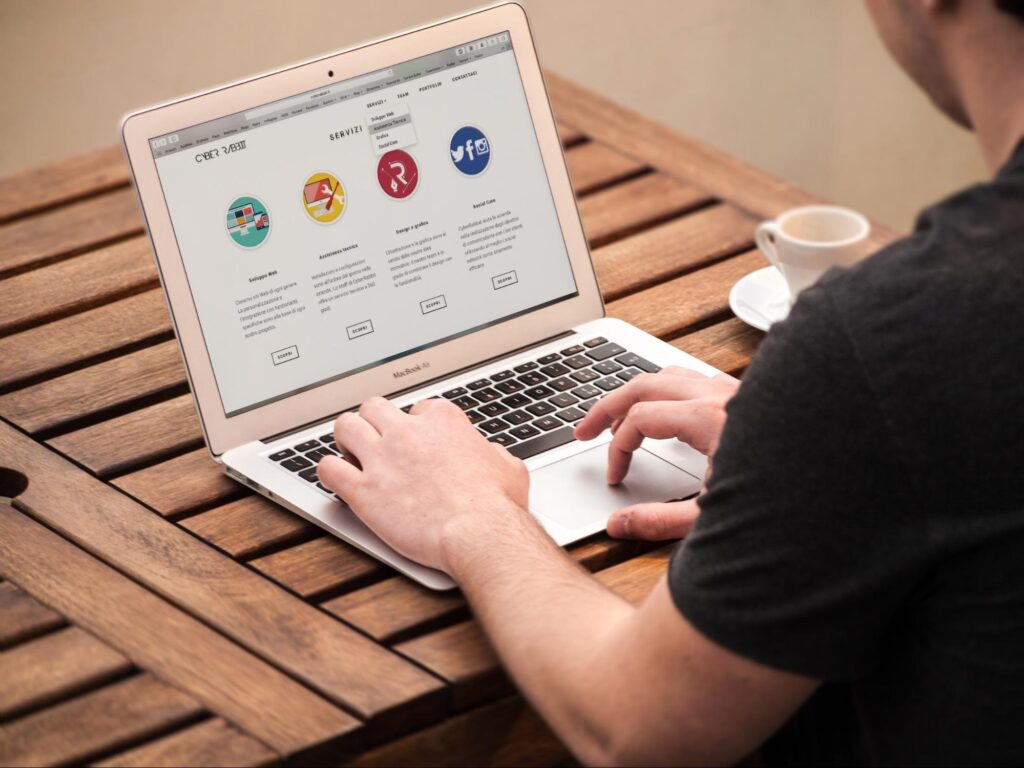
Elements of Effective B2B Website Design
In the world of business-to-business (B2B) transactions, an organisation’s website is often the first point of contact for potential clients. A well-designed website can significantly impact how a business is perceived and can ultimately drive customer engagement and conversions. For that, several key elements need to be considered. So, this article explores the essential components of successful B2B website design.
Clear and Intuitive Navigation

B2B websites often contain information and multiple product or service offerings. It is vital to have an intuitive and clear navigation system that allows visitors to easily find what they want. Logical menu structures, dropdown menus, and search functionality can all contribute to a smooth user experience.
Mobile Responsiveness
In today’s digital age, mobile devices are a primary means of internet access. So, the sites must be optimised for mobile responsiveness to ensure they look and function well on smartphones and tablets. A responsive design ensures the site adapts to various screen sizes and resolutions, providing a seamless experience across all devices.
Compelling Visual Design

The visual design should reflect the company’s brand identity and appeal to the target audience. So, it should be professional, clean, and visually appealing. High-quality images, well-chosen colour schemes, and consistent typography help create a visually engaging experience that captivates visitors and conveys a sense of trust and credibility.
Engaging Content
When it comes to effective B2B website design, content is king. Engaging and informative content helps educate visitors about the company’s products or services and positions the business as an industry expert. A well-crafted homepage, product/service pages, and a regularly updated blog can all contribute to the overall content strategy.
Clear Call-to-Action (CTA)

The sites should include clear and compelling call-to-action buttons or links that guide visitors toward desired actions. Whether it is downloading a whitepaper, requesting a quote, or scheduling a consultation, CTAs should be strategically placed throughout them to encourage conversions. A strong CTA helps drive lead generation and facilitates the sales process.
Customer Testimonials and Case Studies
Building trust is crucial in B2B transactions. Including customer testimonials and case studies can provide social proof of the company’s capabilities and success stories. Real-life examples and positive feedback from existing clients help build credibility and influence potential customers’ purchasing decisions.
Easy Contact and Support Options

B2B portals should make it effortless for visitors to reach out to the company. Contact information should be prominently displayed, such as phone numbers, email addresses, and physical addresses. Additionally, providing live chat support or a support ticket system can enhance customer experience by offering real-time assistance and resolving queries promptly.
Integration With Marketing and CRM Tools
The effective design extends beyond the website itself. As such, integration with marketing automation tools, customer relationship management (CRM) systems, and other business applications can streamline lead generation and customer management processes. Likewise, capturing visitor data, tracking conversions, and nurturing leads become more efficient when the portal integrates seamlessly with other tools.
Analytics and Tracking

A successful design incorporates analytics and tracking mechanisms to monitor performance. Implementing tools like Google Analytics allows businesses to gain insights into website traffic, user behaviour, conversion rates, and more. This data can inform future marketing strategies and portal optimisations, ensuring continuous improvement.
Regular Updates and Maintenance
A website is not a one-time creation; it requires regular updates and maintenance. Keeping content fresh, ensuring compatibility with the latest browsers and devices, and fixing any technical issues promptly are all essential. Regular audits and updates demonstrate that the company is committed to providing a seamless online experience to its visitors.
In conclusion, designing an effective B2B website involves a combination of aesthetics, functionality, and user experience. And businesses can create an online presence that attracts and converts potential clients by incorporating clear navigation, mobile responsiveness, compelling visuals, engaging content, and clear CTAs. Furthermore, leveraging customer testimonials, providing easy contact options, integrating with marketing and CRM tools, and monitoring performance through analytics ensure long-term success in the B2B landscape. Ultimately, an effective web portal acts as a digital storefront, representing the company’s brand and values and facilitating meaningful connections with its target audience.
